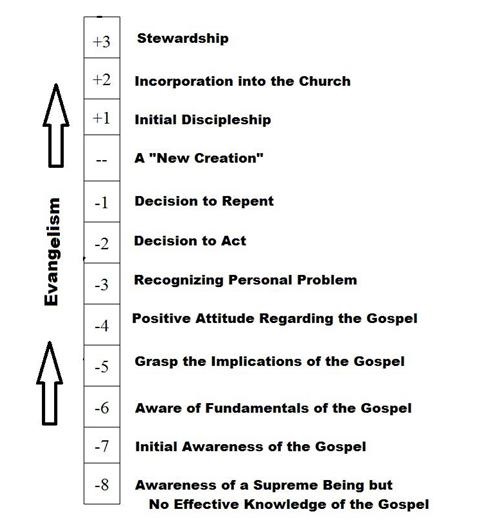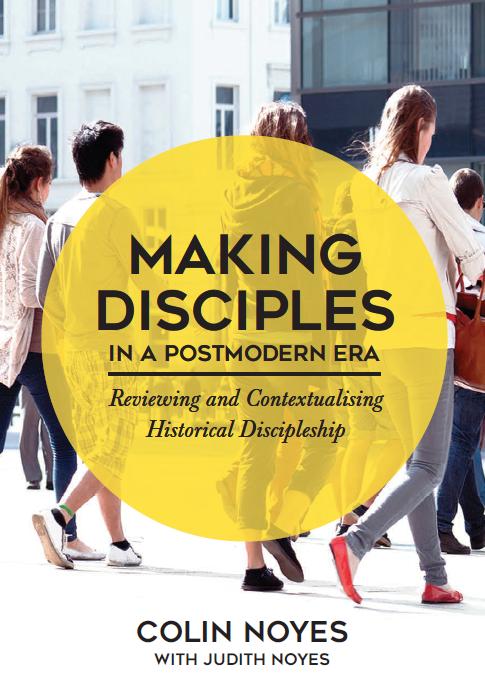Discipleship is more than being a believer. The Greek word translated “disciple” means “follower.” A disciple was a person who invested their life living with and learning from someone and then spreading that experience to others.
When the word discipleship is talked about today it is important to understand that there is no universally accepted view on the subject. Outlined below, in a brief form are some of the current views:
- Discipleship comes after a person has made a commitment to accept Jesus into their lives. Often in this view, discipleship is a short process before a person moves on to stewardship which is often broken down to giving and finding a ministry in the Church.
This approach came to the surface in the 20th century as the church moved heavily into programs as a means of doing ministry. The more institutionalised the church became, the more people were needed to fill the positions. Because the end result was programs people needed to move quickly through discipleship into the place of stewardship (giving and working).
- Discipleship again begins after a person has made a commitment to accept Jesus into their lives. In this view discipleship is a lifelong process of growing in our understanding of Jesus, usually through the process of Bible reading, small study groups and sermons. This approach often ends up with people knowing more and more about God with no increase in obedience. My friend Bob Logan says “they become educated well beyond their level of obedience”.
Most people who espouse this approach trace it back to the work of John Wesley and the beginning of the Modern Era. John Wesley (the founder of Methodism) taught that “a Methodist is one that lives according to the method laid down in the Bible”. These methods were fitted together “to make overcomers”. The significance of the method is very important, because it is “the method to Christian perfection and holiness”.
- Evangelism is the most important part of ministry and discipleship (the term may not even be used) is a serendipitous journey the new convert discovers for themselves as they hang around the Church. This approach can be successful with those who have some sort of religious background as well as with the children of Christians.
This is the most popular approach in the western church today. It is again a Modern approach that flowed from the revivalism of the American frontier. Those methods made perfect sense in their context. People generally knew the gospel; they had been raised in a culture saturated by it. Their refusal to follow and their indifference to Christian behaviour were the result of rebellion not ignorance. It is no wonder the “evangelists” of those days would ride in on their horses and preach with high emotion and hot rhetoric! They were scolding recalcitrant children who knew better! This American approach spread though the world under the guidance of the neo-evangelicals during the mid 20th century.
- A similar evangelistic approach goes further and recognizes that there are other people who do not have a religious background and so a number of pre-evangelism steps are added to the approach above. This process systematically takes a person from no knowledge of God to a point where they accept Jesus as their Saviour. From there, discipleship is again a short process that leads to incorporation and stewardship.
In 1975, James Engel wrote a book called What’s Gone Wrong With The Harvest? In it he introduced a tool which became known as the ‘Engel Scale’. This scale outlines the step by step process an individual takes on the journey of evangelism. Even though it is often referred to as pragmatic, structured and institutionalised, and rightly so, it does clearly bring into focus those people who do not have a religious background and the fact that these people usually need to go on a journey. He wrote that everyone who makes a commitment to Jesus has a story to tell of people and events in their lives bringing them closer and closer to the point of full commitment. He also said this process was not instantaneous and could take up to four years.

- Finally, discipleship begins with people who have no relationship with Jesus and it is the journey they take as they move towards Him. This journey involves a discipler and is a lifelong journey. Pre-evangelism, evangelism leading to conversion, stewardship and maturity are all encompassed in this approach but are not given separate names.
This approach is used most often by those who are working with Postmoderns in the 21st century. This new world we live in is:
- Disconnecting from the Christian meta-narrative.
- A place where Christianity is being relegated to the edge of society and beginning to face deliberate aggression.
- A place where paganism is on the rise.
- Increasingly moving toward a mystical view of life, full of the unknown.
Because of these changes, Modern Era views of discipleship outlined above in the first four styles will not be effective in the future. So where do we go from here?
- Will we insist on preserving our current way of doing things and just work harder?
- Will we accommodate the changes and modify our style of ministry to fall in line with the thinking of this new era which will be very difficult to do?
- Will we return to the first century to look for the answers that are based heavily on a Jewish culture?
- Will we carefully and cautiously seek to review all of historic Christianity at the dawn of this new Era and learn from what God has been doing over the last 2000 years?
I believe the best place to start our journey is the first half of the Common Era 100-400AD. The Church of this time had to deal with the kind of thinking we find today. This thinking and discipleship approach are covered in “Making Disciples in a Postmodern Era” and “Making Disciples in the 21st century”
As you work through these different approaches, remember none of them are theological or Biblical and all of them find their beginnings in seeking to relate to the culture of an historical time period.

Christianity in the 21st century is facing a major change that may be as dramatic as the Protestant Reformation. The sobering thought is that ‘business as usual’ may work for a while longer for some but there is a need to begin transitioning our discipleship practices to meet the dramatic changes that are already happening (especially in the West).

The mission of the church “to make disciples” was a foundational, intentional practice for the early church. This relational style of discipleship continued for 300 years after Jesus, until the conversion of Constantine and the establishment of Christianity as the state religion. From this point on, the church lost its relational foundation. Discipleship moved to classrooms, a book with stories of people who lived long ago, and attendance at a weekly gathering of strangers. Today, with the death of Constantinian Christendom and the emergence of a Post-Christendom pagan culture, the Church needs to recover its relational and missional status through discipleship.
